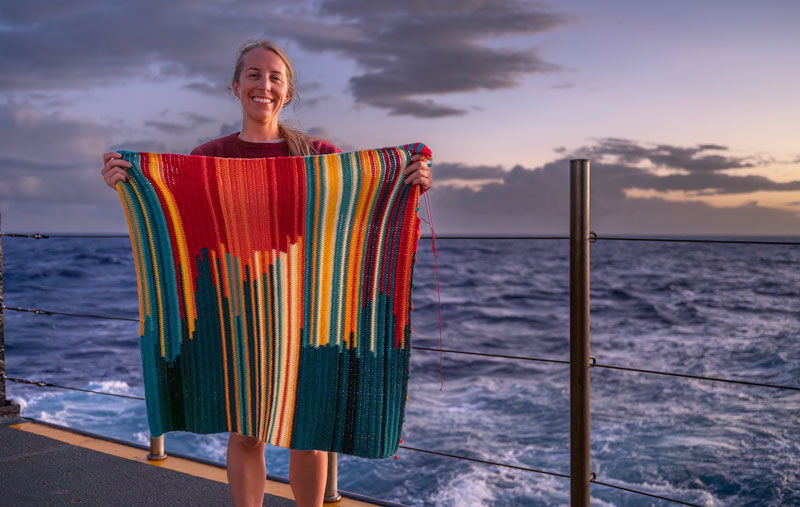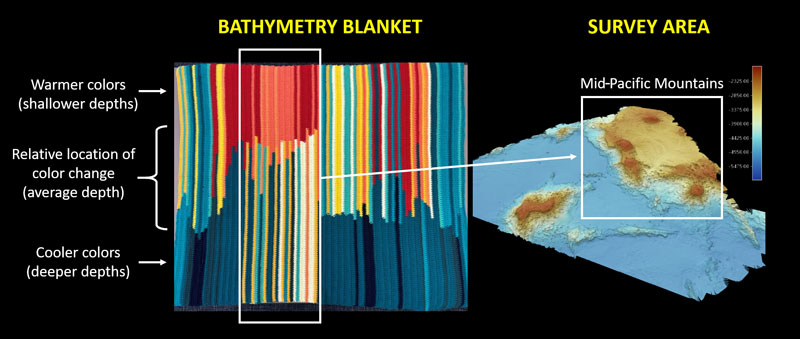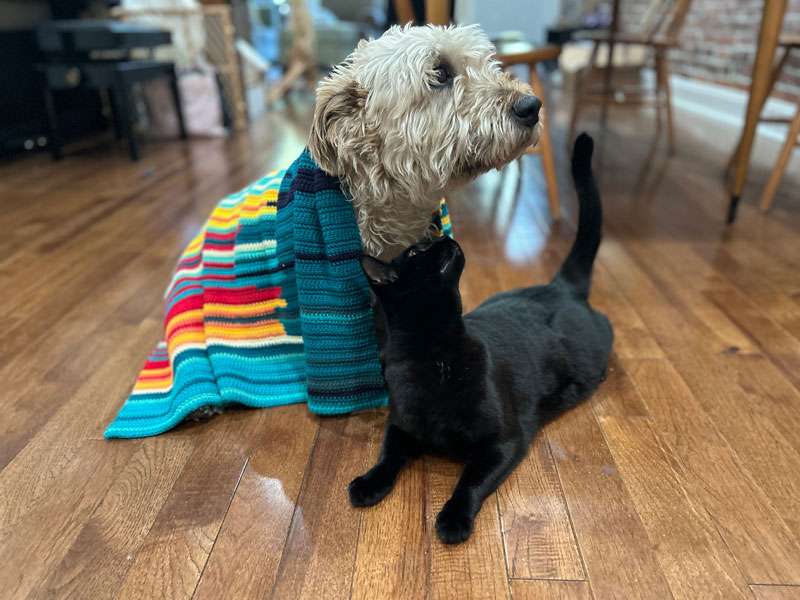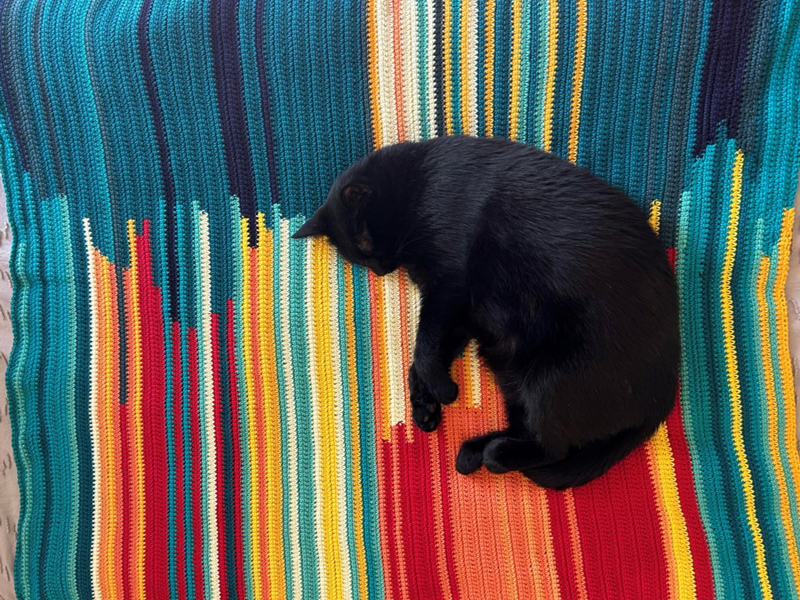Beyond the Blue: Johnston Atoll Mapping
(EX2405, EX2406)
Stitching Science: Bringing Ocean Mapping Data to Life with Crochet
Twenty-six days at sea; more than 49,000 square kilometers (18,919 square miles) of seafloor mapped; 5,579 linear nautical miles (6,420 linear miles) traversed… and 13,580 linked double crochet stitches stitched.

I joined the Beyond the Blue: Johnston Atoll Mapping 2 expedition to better understand NOAA Ocean Exploration’s ocean mapping operations and at-sea student experiences. As the internship program coordinator with NOAA Ocean Exploration, I help to coordinate internship and fellowship opportunities in our office, including our Explorer-in-Training program. Having started in this position earlier this year, sailing on NOAA Ship Okeanos Explorer was an invaluable opportunity to spend time with the explorers-in-training and mapping team, and to gain first-hand experience going to sea alongside our interns.
I quickly learned that life at sea involves long stretches of downtime between work tasks. While being on the water offers ample opportunity to slow down and self-reflect, it can also be isolating and monotonous. Finding ways to break up the day is crucial for mental well-being, and there are plenty of options on board: movie and spa nights, a fully equipped gym for exercising, and Super Smash Bros. Engaging in hobbies like reading, writing, photography, or crafting can help create routine and a sense of normalcy during long periods at sea. One way I passed the time was through a personal hobby of mine: crochet. Each evening, needle and yarn in hand, I’d join the crew for a nightly horror film hosted by a member of the ship’s engineering department, and spend hours working on my "bathymetry blanket."
The project is inspired by temperature blankets — a popular trend among crocheters and knitters to show temperature changes over time, which I learned about through the Temperature Blanket Stitch-a-Long hosted by the NOAA Library. The bathymetry blanket takes a similar idea, but instead shows the ocean depths observed while mapping bathymetry throughout the expedition.

I assigned 11 colors to different depth ranges: reds and yellows for shallower waters (~2,000-4,000 meters/1.2-2.5 miles), blues and purples for deeper areas (~4,000-6,000 meters/2.5-3.7 miles). Each vertical row contains two colors, illustrating the deepest and shallowest points recorded in a 6-hour period. The relative location of the color change is positioned to represent the average depth of the seafloor for that timeframe. For example, a color change toward the top of the blanket indicates shallower average depths than a row with the color change closer to the bottom, so following the color changes across the blanket gives a sense of the topography seen over time throughout the expedition. Seafloor features like abyssal plains are seen in the blanket as vast blue sections, indicating deeper average depths; while plateaus rise as red sections, signifying more consistent, shallow depths. Mountainous regions are seen as a tapestry of colors and varied average depths, echoing the diverse topography of the seafloor. The finished blanket contains 97 rows, representing 582 hours (a little more than 24 days) worth of bathymetry data collected using multibeam sonar.
What began as a way to pass time during the expedition helped me to reflect on the deeper connections between art and science. The bathymetry blanket allowed me to translate abstract numerical data into something tangible and visual. Presenting scientific concepts creatively can make complex data more relatable, enabling opportunities to connect with new audiences that might not typically engage with ocean exploration or research, but who can appreciate deep-sea science through a different lens. Unexpected conversations on the ship and at the airport would begin with people asking me what I was working on, what it represents, or sharing childhood stories about crocheting with our grandmas, and lead into discussions on ocean mapping. By combining art and science (and packing an extra carry-on bag full of yarn), we can highlight the critical work NOAA Ocean Exploration does to advance our understanding of the ocean, and inspire new communities to explore the beauty of the deep sea.


Special thanks to the scientists, crew, and explorers-in-training who were part of the Beyond the Blue: Johnston Atoll Mapping 2 expedition, and to Expedition Coordinator (and coding extraordinaire) Thomas Morrow for helping to turn multibeam sonar data into crochet art.
By Jesse Gwinn, Internship Program Coordinator, NOAA Ocean Exploration
Published November 7, 2024